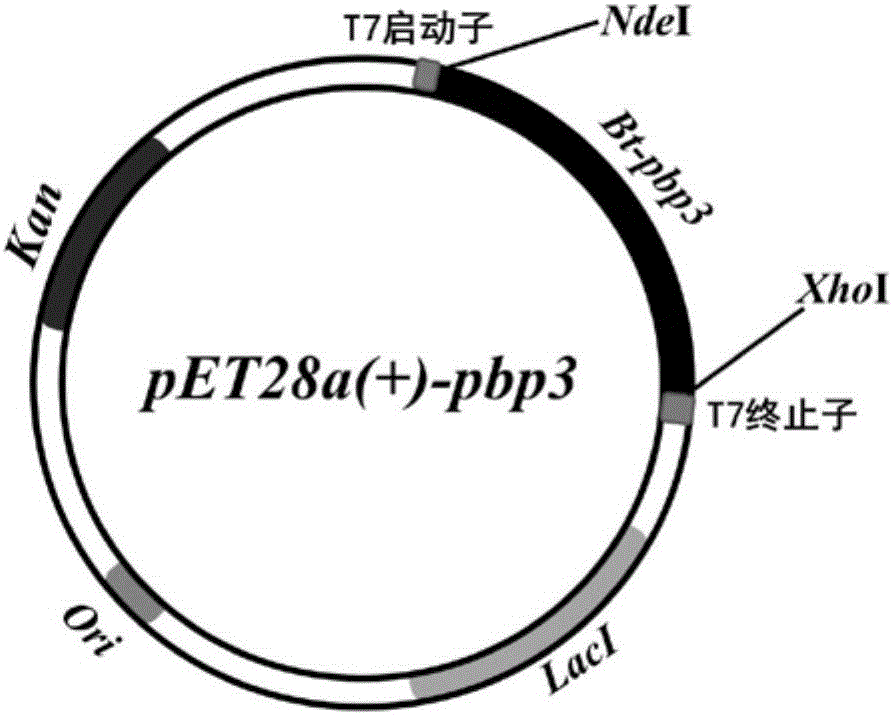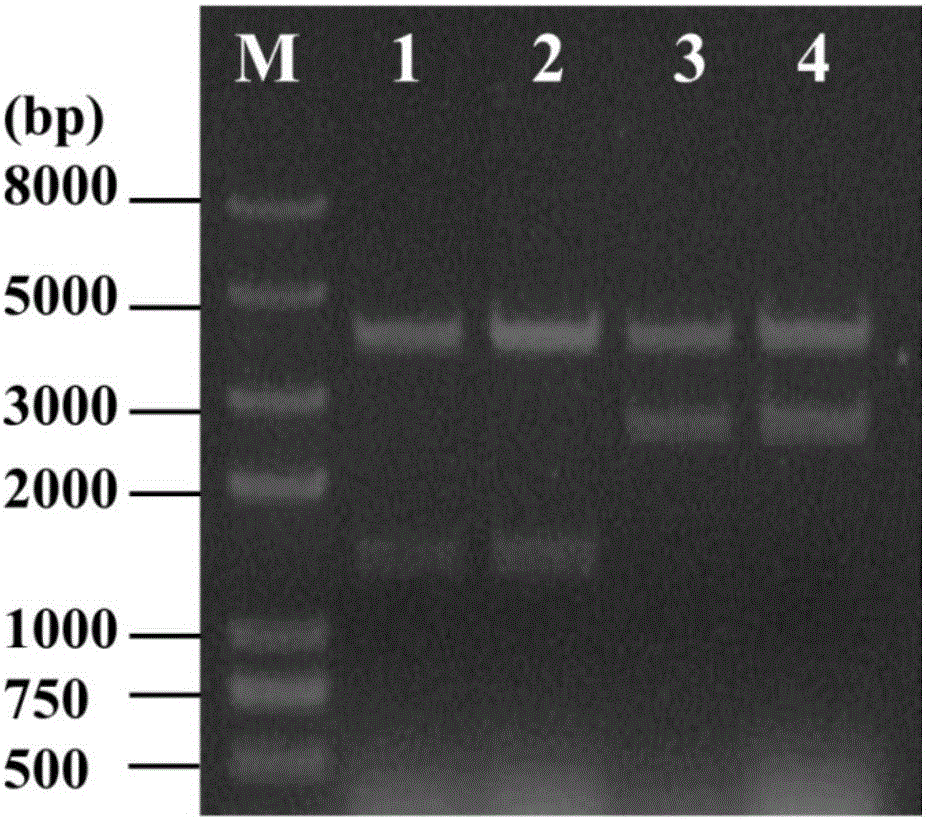Penicillin-binding protein and application thereof
A technology for binding protein and penicillin, applied in penicillin binding protein and its application field, can solve the problems of high technical level requirements of analysts, time-consuming, uncomfortable and rapid detection of β-lactam antibiotic residues, etc. The sample pretreatment process is simple, and the effect is suitable for on-site rapid detection
- Summary
- Abstract
- Description
- Claims
- Application Information
AI Technical Summary
Problems solved by technology
Method used
Image
Examples
Embodiment 1B
[0022] The preparation of embodiment 1Bt-PBP3 protein
[0023] 1. Total DNA extraction of Bacillus thuringiensis
[0024] (1) Inoculate the Bacillus thuringiensis strain BMB171 in a 5ml PA bottle for overnight activation at 28°C, transfer to LB medium in 50ml liquid medium at 1% inoculation amount the next day, and cultivate to logarithmic at 28°C and 200r / min During the growth period, the cells were collected by centrifugation and washed once with STE.
[0025] (2) Add 5.75ml Solution I (25mM Tris-HCl (pH8.0), 10mM EDTA, 50mM glucose) and 250μL lysozyme (200mg / mL) to ice overnight,
[0026] (3) Add 3ml of 10% SDS in a water bath at 50-60°C for 30min; then add 3.6ml of 5MNaCl, put on ice for 10min and then directly add phenol: chloroform: isoamyl alcohol (25:24:1) to remove protein; centrifuge at 12000r / min for 15min Then take the supernatant, add 2 times the volume of absolute ethanol to precipitate. Wash once with 70% ethanol.
[0027] (4) Dry the precipitate with 200 μL...
Embodiment 2B
[0047] Example 2 Determination of Bt-PBP3 Protein Conjugating Ability with Penicillin
[0048] 1. Preparation of penicillin G standard samples
[0049] Penicillin was dissolved in PBS buffer solution to prepare a standard solution with a concentration of 1 μg / mL, and this solution was added to known antibiotic-free reconstituted milk to prepare a standard sample with a certain concentration of penicillin. Subsequently, the standard samples were placed on a shaker for 15 minutes and thoroughly mixed.
[0050] 2. Bt-PBP3 coated microtiter plate
[0051] Add 100 μL of penicillin-binding protein Bt-PBP3 solution (4 μg / mL) to the microwells of the microtiter plate, and place at 4°C overnight to immobilize the Bt-PBP3 protein on the surface of the microwells. Pour off the liquid in the well, and add PBS buffer solution (1.47g / LNa 2 HPO 4 , 0.43g / L KH 2 PO 4 and 6.79g / L NaCl; pH7.2) 300μL, washed 3 times, and patted dry on filter paper.
[0052] 3. Sealing of the microtiter pl...
Embodiment 3
[0062] Example 3 Application of Bt-PBP3 Protein Determination of Penicillin G Residues in Food
[0063] 1. Pretreatment of test samples
[0064] The test sample is milk: skimmed milk samples are directly loaded for testing, pure milk samples are centrifuged at 5000 rpm for 5 minutes, and directly tested after skimming.
[0065] Test samples are meat, fish, shrimp and eggs: Weigh 10g of the sample, add 20mL of 10% acetonitrile aqueous solution (volume ratio), mix vigorously for 15 minutes, centrifuge at 8000rpm for 5 minutes, take the supernatant, dry it with nitrogen, and use 1mL Dissolved in deionized water for detection.
[0066] The test sample is honey: Weigh 10g sample, add 20mL deionized water to dissolve, enrich penicillin through Oasis solid-phase extraction column, wash the column with 5mL deionized water, dry it under negative pressure, then elute with 5mL methanol, collect and elute Blow dry with liquid nitrogen, dissolve with 1mL deionized water, and use for dete...
PUM
 Login to View More
Login to View More Abstract
Description
Claims
Application Information
 Login to View More
Login to View More - R&D
- Intellectual Property
- Life Sciences
- Materials
- Tech Scout
- Unparalleled Data Quality
- Higher Quality Content
- 60% Fewer Hallucinations
Browse by: Latest US Patents, China's latest patents, Technical Efficacy Thesaurus, Application Domain, Technology Topic, Popular Technical Reports.
© 2025 PatSnap. All rights reserved.Legal|Privacy policy|Modern Slavery Act Transparency Statement|Sitemap|About US| Contact US: help@patsnap.com



